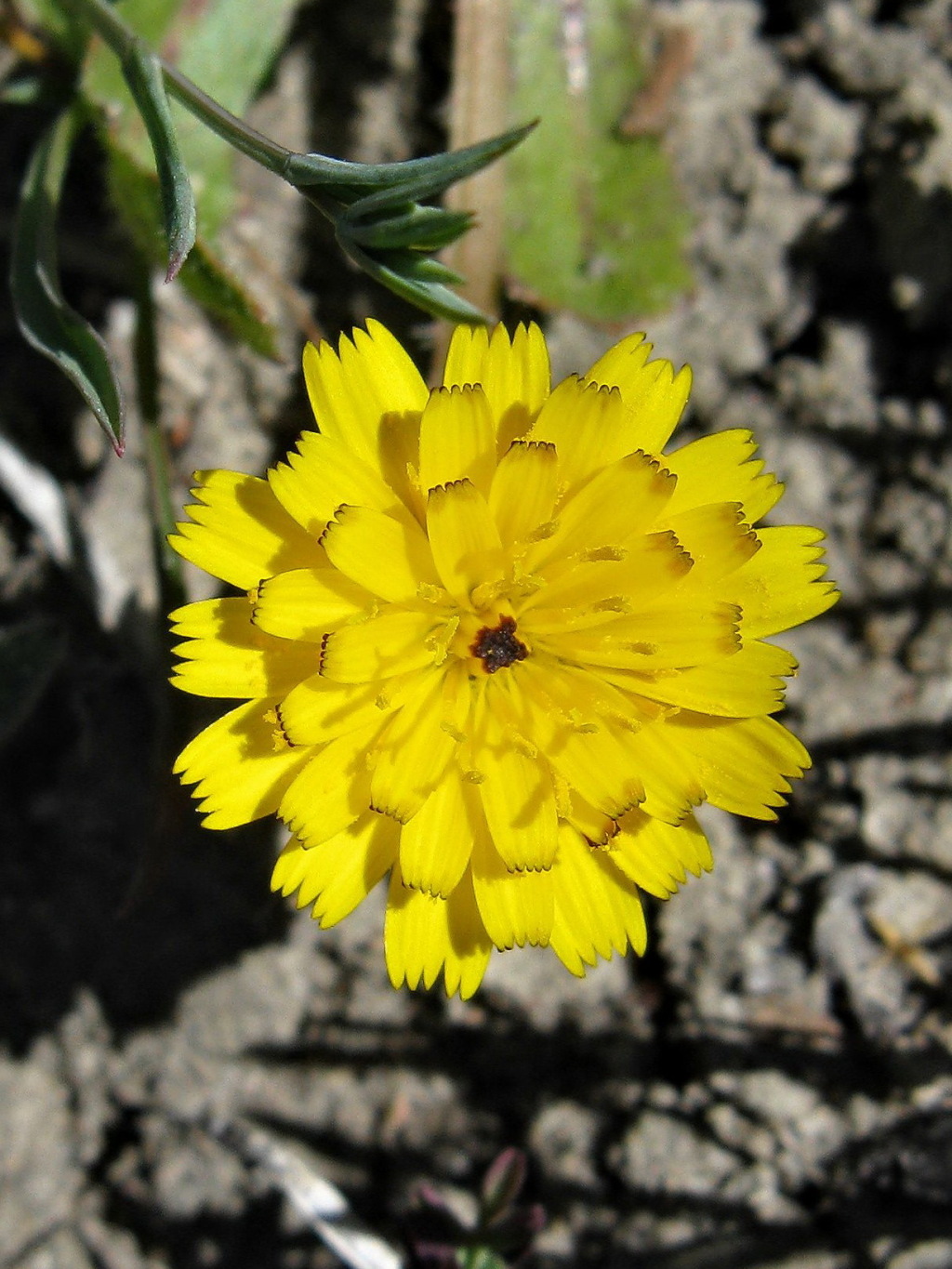Leontodon rhagadioloides
(L.) Enke & ZidornAnnual to 45(–60) cm high. Basal leaves oblanceolate to oblong, 2–16 cm long, 0.8–4 cm wide, obtuse, base petiole-like, entire to pinnatifid, sometimes lyrate, scabrous-pubescent particularly on margins and midrib; cauline leaves elliptic to lanceolate, 1–10 cm long, 3–30 mm wide, acute, base stem-clasping, entire to pinnatifid. Capitula 1–several, 5–10 mm diam.; peduncles thickened below capitula; inner involucral bracts linear-lanceolate, 6–10 mm long, strongly incurved in fruit, with few-many hairs. Ligules 3–6 mm long, slightly exceeding involucre, yellow, often purplish externally. Cypselas 5–7.5 mm long, incurved, blackish; pappus of outer cypselas c. 1 mm long; pappus of inner cypselas 3–6 mm long. Flowers mostly Aug.–Nov.
LoM, MuM, Wim, VVP, VRiv, MSB, RobP, MuF, GipP, OtP, WaP, Gold, CVU, GGr, DunT, NIS, Strz, VAlp. Widespread mainly in drier inland parts of Victoria in both disturbed and relatively intact natural sites.
An extremely variable species with many infraspecific taxa recognized in Europe and the Middle East. Tutin et al. (1976) however, point out that certain characters may occur in various combinations even at a single locality, and hence the variants are of no geographical or ecological significance.
Jeanes, J.A. (1999). Asteraceae. In: Walsh, N.G.; Entwisle, T.J., Flora of Victoria Vol. 4, Cornaceae to Asteraceae, pp. 652–666. Inkata Press, Melbourne.
 Spinning
Spinning



